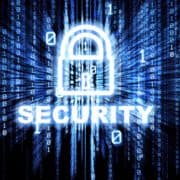Five Must-Do’s When Assessing ERP Data Security
If there is anything that the current pandemic has caused, it’s panic. Businesses had to scurry to either close down or adjust their way of day to day operations and sometimes that panic can make them vulnerable. Enterprise resource planning (ERP) data security should be a carfeully monitored, especially when most employees have been ordered to work from home with remote networks (that may or may not be as secure as their work networks). Marcus Harris, with Taft Stettinius & Hollister LLP, share an article on lexology.com about ERP data security and how important it is to ensure maximum safety. There are five must-do steps that organizations need to take in checking ERP data security and then close any gaps that are revealed:
- Assume nothing. Begin with the premise that the outcome is unknown. Making assumptions will put an organization at risk.
- Use every tool to assess risks. Recognize that no single tool will solve the problem of ERP data security. It is far safer to also assess risks that may arise elsewhere, using things such as network detection and response software.
- Keep an open mind. Relying on the history of what you have always found in the past creates its own bias. It is vital to look at the data from all angles.
- Don’t judge in advance. No matter how keen one’s judgment and experience might be, a holistic approach – and solution – to solving a problem is needed. Professionals need to see everything happening on a network.
- Beware of what the eye sees. Be wary. A small discrepancy that isn’t usually perceived as a genuine threat could well be masking a more lethal attack.



